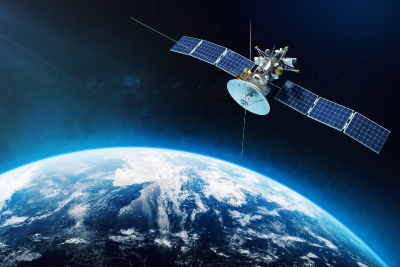Written by Shamika N. Sirimanne, Director of UNCTAD’s Division on Technology and Logistics
Space is not just for astronauts. It’s the next frontier for tackling humanity’s most intractable problems such as food security, climate change and social inequality, as revealed at the first World Space Forum late last year.
Developing countries are crossing over the space frontier with a growing number of maiden satellite launches and inaugural space initiatives. Yet many lack capabilities to navigate through the vast profusion of data acquired by space technologies, namely through satellite Earth observation, and satellite positioning systems, as well as to effectively utilize satellite communications.
To avoid a leap into the dark and to reap long-term benefits from emerging space programmes, developing countries need to address their capacity constraints in processing the tide of raw data that flows from satellites.
The process of filtration, refinement and modelling for translating data into usable information in forecasting models requires huge computing capacities and appropriate skills in machine learning and artificial intelligence.
Not just for rich countries
Opportunities for developing countries are not as far-fetched as some might think and need not require mobilizing resources on a massive scale for Apollo-style missions.
Space technologies can be vital in agricultural innovation, modern agriculture and precision agriculture.
The use of space technologies for farming and natural resources management used to be limited largely to developed countries, due in part to the high costs involved.
However, new technological developments that reduce the costs of using space-based applications and collaborations among local, national, regional and international stakeholders can potentially increase the uptake of applications relevant for addressing the Sustainable Development Goals (SDGs), particularly in developing countries.
For example, open access to geospatial data, data products and services and the lower costs of geospatial information technology facilities have stimulated the adoption of space technologies worldwide, particularly in developing countries, through initiatives such as Open Data Cube.
Space technologies are also crucial to monitor disasters, set up and feed data into early warning systems, and share alerting messages through multiple ICT platforms.
In May 2020, the Tropical Cyclone Amphan in the North Indian Ocean resulted in over 128 deaths and caused over $13.2 billion in damages. Satellite-based maps were used to track the cyclone and to help local authorities identify and evacuate vulnerable people as well as pinpoint areas where there were damages.
But how can we ensure that the benefits of space technologies are directed towards improving the quality of life in households?
Connecting the unconnected is a critical precondition for paving the way for a digital future. Satellite technologies are well-placed for the delivery of broadband services either alone or in combination with other technologies.
Expanding internet access to rural areas is challenging — populations are less dense, further from main networks, and have lower purchasing power. A new set of network technologies can often reduce infrastructure requirements and offer more cost-effective service delivery options.
Bangladesh’s recently launched telecommunications satellite Bangabandhu-1 – which cost around 0.5% of the country’s annual budget – is already broadcasting TV and radio programs and will soon provide internet, telemedicine and distance learning facilities for people in remote areas.
Data, data everywhere
In recent years, satellite data has become a lot more available – and at a lower cost.
The European Union’s Earth observation programme Copernicus offers largely free access to data.
Translating this data into useful knowledge requires remote sensing skills – which many developing countries simply don’t have. One way to address this is by removing the burden of processing data to ensure that its harvests can be effectively used within countries that lack capabilities.
To support this, Earth observation groups have been developing tools to translate the high volume of satellite data into user-friendly formats.
Some providers have started to offer “analysis-ready data”, or ARD, to make satellite data more user-friendly. This involves data that has been cleared from anomalies, typically through algorithms, making it more digestible for end-users who would have otherwise been unable to make use of the data.
For example, China’s leading crop monitoring system CropWatch, which operates in many developing countries, offers analysis-ready products with customizable indicators for national and regional contexts.
And the UK Space Agency’s International Partnership Programme has an initiative known as CommonSensing that is using the data cube model to help the governments of the Solomon Islands, Fiji and Vanuatu to use Earth observation to build climate resilience.
Need for Cooperation
Regional and international cooperation can enable cost-effective ways to benefit from space research to stimulate industrial activities and private sector research and development in space technologies.
An example of a regional initiative is the Africa Regional Data Cube, which seeks to bring open-data cubes to Ghana, Kenya, Senegal, Sierra Leone and Tanzania through partnerships with Earth observation organizations and capacity building within countries.
This regional initiative provides hands-on training on the management of the data and on approaches for applying application algorithms to produce relevant products for decision-making.
Earth observation communities, under collaborative initiatives, can be a source of significant cost-effective solutions to enable developing countries with scarce resources to deploy space technologies for development objectives.
Regional and international collaboration could help address persisting capacity constraints and bottlenecks, including the lack of awareness of the benefits of space technologies, limited financial resources and technology, and skills gaps in developing, using and adapting space technologies.
These issues are discussed in a UN report presented to government ministers and experts at a the 23rd session of the Commission on Science and Technology for Development, the UN’s STI for development focal point.
Science, technology and innovation can be catalysts for achieving the sustainable development goals.
In the context of the UN Commission on Science and Technology for Development, the CSTD Dialogue brings together leaders and experts to address this question and contribute to rigorous thinking on the opportunities and challenges of STI in several crucial areas including gender equality, food security and poverty reduction.
The conversation continues at the annual session of the Commission on Science and Technology for Development and as an online exchange by thought leaders.




